|
This month we are going to compare two grapes very different one from each
other and not only according to a geographic point of view. Aglianico and
Merlot are in fact the two varieties we are about to compare, with the main
goal of revealing the remarkable differences in order to understand their
respective characteristics. The first grape is famous for having made great the
enology of Campania and Basilicata, considered by many as the Nebbiolo of South
Italy, it makes wines of remarkable character, most of the times dividing wine
lovers. The second grape is famous all over the world and it is virtually found
in every wine country, among the many varieties that from France have conquered
our planet. In its home land - Bordeaux - Merlot has proved its remarkable
versatility alone as well as blended to other varieties, a characteristic it
proved in other countries as well, including Italy and Aglianico. Its spreading
is such that it is hard to find in the world a red berried variety which was
not blended to Merlot in wine making.
Expressing totally different characters, even opposed, the two varieties have
very little in common, except for red color, of course. Aglianico is a variety
dividing wine lovers: some love it for its particular and robust character,
others do not like it both for this reason and for the fact they consider it to
be somewhat “rustic”. Merlot has a successful past of protagonist and is
considered a miracle variety: it has been frequently used in order to
“improve” wines having pretty particular characteristics and it literally
charmed many wine lovers because of its famous roundness. This characteristic
has also been the reason which caused - in recent times - a sort of change in
trends, by many considered too strong and, as such, blamed for having
standardized the taste of wine in which Merlot was used. On this regard,
Aglianico was no exception and it has been blended to Merlot and, despite this
did not happen that much, the meeting with the French red gave pretty
interesting results.
The main areas of Aglianico undeniably are Campania and Basilicata: here the
famous red berried variety of South Italy reaches its best expressions and it
is widely common. A good spreading is also found in Apulia and Molise, it is
then found, in marginal measure, also in other regions of Central and South
Italy. The most famous wines produced with Aglianico certainly are Taurasi - in
province of Avellino, Campania - and Aglianico del Vulture, produced in the
area having the same name of Basilicata. The region in which are found the most
varied expressions of Aglianico is Campania, in particular in the areas of
Benevento, Avellino and Salerno. Thanks to the expression of Vulture, Aglianico
has proved to have an excellent wine making versatility, capable of making
white wines - by removing skins from the must before vinification - sparkling,
rose, red and even sweet wines.
It is believed Aglianico was introduced to Italy by ancient Greeks in the
seventh century BC, here it became known with the name ellenico, and
then became, in fifteenth century - because of the Aragonese dominion in those
lands and of Spanish language - Aglianico. It probably is the linguistic
adaptation of “ellenico” in Spanish language, in particular how they
pronounce the double “l”. A robust grape, having a good crispness, Aglianico
makes wines of remarkable body and a pretty strong character, a condition which
is usually mitigated by alcohol, aging in wood and time. The most common and
produced style is of course the dry red, a style which allowed Aglianico to
prove all of its strength and character. According to a wine making and
sensorial point of view, Aglianico has also proved to have a very good
enological versatility, from the use of inert containers to wood barrels.
Originating from lands so far away from those of Aglianico, Merlot is one of
the most famous and successful varieties of the wine scene. It traveled from
France and conquered the vineyards all over the world, Merlot - together with
Cabernet Sauvignon and Cabernet Franc - makes the so called Bordeaux
blend, once including Petit Verdot and Malbec as well. Known everywhere in the
world for its round and smooth character, Merlot has got the appreciation of
wine lovers as well as the disregard of others, because of its characteristic
of standardizing the taste of certain wines. This charge is in part true and -
it must be said - it is the result of the abuse some made of this variety,
despite this famous grape from Bordeaux is capable of making wines of
extraordinary greatness and class. Its characteristic roundness however made
it popular all over the world, used in wines easily meeting the taste of
countless consumers.
|
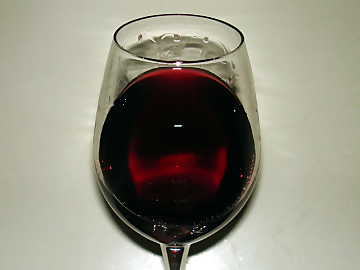 | |
| The color of a wine made from
Aglianico grape: moderate transparency and intense ruby red. | |
|
Merlot has been capable of proving its greatness also in territories distant
from its homeland, however it is Bordeaux to represent the main wine model for
this variety. The evident roundness of Merlot is in fact useful in smoothing
the power and strength of Cabernet Sauvignon, while noticing this variety is
however excellent when vinified alone and capable of expressing wines of
absolute value. Having a good body, Merlot is used in the world to smooth the
harshness of some varieties and, at the same time, increase the body, a role
Merlot virtually plays in every wine country of the world. Moreover, thanks to
its characteristics, Merlot is particularly suited to the fermentation and
aging in wood, in particular with the Bordelaise barrique, joining its
organoleptic character to the one of wood.
Our tasting by contrast of Aglianico and Merlot will examine two wines produced
with the very same wine making techniques, in order to ensure - as much as
possible - the same tertiary organoleptic conditions. This is a fundamental
consideration because the two varieties are usually vinified in cask or
barrique, containers greatly influencing the characteristics of wine in
different ways. As for the place of origin of the two wines, choosing Aglianico
is clearly easier than Merlot, the latter widely spread everywhere and with
different interpretations. While noticing every territory gives the wine its
specific qualities, as well as influencing the expression of grapes, the main
characteristics of the varieties will however be well perceptible. Another
consideration is about the vintage of the two wines, which will possibly be the
same for both and however with at least three years of aging.
Let's start the evaluation of the two wines from the first phase of wine
sensorial tasting: appearance. Of the three phases making the sensorial tasting
of wine, this one gives the least number of contrasting elements and the
analogies are evident. In general terms, Aglianico and Merlot show the same
characteristics. By observing the glass at its base, it will in fact be noticed
in both wines an intense and deep ruby red color. By tilting the glass, it will
be observed the wine at its edge: the differences are not many if not absent;
nuances of ruby or garnet red, according to the age of the wines. Transparency
is virtually the same both in Aglianico and Merlot, however it should be
noticed that, in certain cases, the famous red from Bordeaux can show a lower
transparency. In other cases, and according to viticultural and wine making
techniques, Aglianico can show a lower transparency than Merlot.
Let's now pass to the evaluation of olfactory profiles of the two wines, an
examination emphasizing the differences of the two grapes in their expression
of aromas. The two wines are quite different to the nose, despite they share
many olfactory characteristics, Aglianico and Merlot - in their aromas - are
however distant in many aspects. Both share the richness of aromas recalling
black berried fruits, sometimes red ones, however the quality and intensity of
what can be perceived to the nose is evidently different. In the olfactory
profile of the two wines can also be perceived flowers, as well as tertiary
qualities developing according to the wine making techniques used for
production. On this regard, it should be noticed the vinification of Aglianico
is made both in barrique and cask, whereas the container generally used for
Merlot is barrique, by following the Bordelaise school.
Let's start the olfactory evaluation from Aglianico. By keeping the glass in
vertical position and without swirling, the opening offers to the nose intense
and clean aromas of black cherry, blackberry and plum. Swirling the glass will
allow Aglianico to express sensations of violet and blueberry. Moreover, it
will be noticed a pretty rustic character, an absolutely typical
characteristic of Aglianico and frequently dividing wine lovers, as not all of
them appreciate this aspect of the great grape from South Italy. Merlot
expresses a series of aromas which can be considered more linear, in which are
clearly recognized black currant, black cherry and plum. By swirling the glass,
it will be perceived the aromas of blueberry and violet, sometimes peony and
iris as well. It should be noticed that, although this is a quality usually
avoided in wines, Merlot cultivated in particularly cold areas, can sometimes
express a vegetal or herbaceous aroma, mainly recalling green bell pepper.
Differences gets more evident during the gustatory evaluation of the two wines.
The character expressed by Aglianico and Merlot can be considered, in many
aspects, opposed and distant. Aglianico is characterized by a vibrant
crispness, something reinforcing astringency, while keeping its balance thanks
to alcohol and roundness given by the aging in cask. Aglianico does not lose
its characteristic crispness despite time can sometime make this quality
milder. On the other hand, Merlot expresses a roundness and smoothness distant
from what can be perceived in Aglianico, while expressing a good body and an
appreciable astringency, usually given by barrique. In both wines will be
noticed the role played by alcohol in balance, usually found in significant
quantity both in Aglianico and Merlot.
The final phase of sensorial tasting continues to emphasize the differences of
the two varieties. The finish of Aglianico is characterized by its typical
crispness and structure, while allowing the perception of blackberry and black
cherry. Merlot has a completely different finish, making of its well known
roundness the main quality to be perceived after having swallowed the wine. It
will also be perceived flavors of black currant and black cherry, as well as a
moderate sensation of astringency, far lower than Aglianico. Varieties usually
giving good quality products, wines produced with these two grapes express a
good persistence and correspondence to the nose. However, they are wines
different in many regards and expressing distinct qualities, one characterized
by crispness and power, the other by a roundness which can also be supported by
power. Nevertheless, two magnificent varieties, capable of giving great wines,
controversial for some, excellent wine interpreters for others.
|


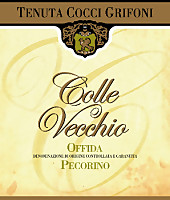
 Pecorino
Pecorino Intense greenish yellow and nuances of greenish yellow, very
transparent.
Intense greenish yellow and nuances of greenish yellow, very
transparent.
 Intense, clean, pleasing and refined, starts with hints of plum, apple
and broom followed by aromas of pear, jasmine, hazelnut, peach, pineapple,
hawthorn and mineral.
Intense, clean, pleasing and refined, starts with hints of plum, apple
and broom followed by aromas of pear, jasmine, hazelnut, peach, pineapple,
hawthorn and mineral.
 Crisp attack and however balanced by alcohol, good body, intense
flavors, agreeable.
Crisp attack and however balanced by alcohol, good body, intense
flavors, agreeable.
 Persistent finish with flavors of apple, plum and peach.
Persistent finish with flavors of apple, plum and peach. 4 months in steel tanks, 6 months in bottle.
4 months in steel tanks, 6 months in bottle. Pasta with fish, Mushroom soups, Sauteed white meat, Sauteed fish, Fried fish
Pasta with fish, Mushroom soups, Sauteed white meat, Sauteed fish, Fried fish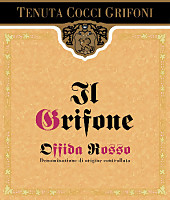
 Montepulciano (70%), Cabernet Sauvignon (30%)
Montepulciano (70%), Cabernet Sauvignon (30%) Deep ruby red and nuances of garnet red, little transparency.
Deep ruby red and nuances of garnet red, little transparency. Intense, clean, pleasing, refined and elegant, starts with hints of
black cherry, plum and black currant followed by aromas of violet,
blueberry, blackberry, vanilla, tobacco, chocolate, toffee, graphite,
licorice, leather, mace and eucalyptus.
Intense, clean, pleasing, refined and elegant, starts with hints of
black cherry, plum and black currant followed by aromas of violet,
blueberry, blackberry, vanilla, tobacco, chocolate, toffee, graphite,
licorice, leather, mace and eucalyptus.
 Tannic attack and however balanced by alcohol, full body, intense
flavors, agreeable.
Tannic attack and however balanced by alcohol, full body, intense
flavors, agreeable.
 Very persistent finish with long flavors of black cherry, plum and
black currant.
Very persistent finish with long flavors of black cherry, plum and
black currant.
 32 months in cask, at least 12 months in bottle.
32 months in cask, at least 12 months in bottle. Game, Roasted meat, Stewed and braised meat, Hard cheese
Game, Roasted meat, Stewed and braised meat, Hard cheese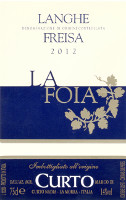
 Freisa
Freisa Intense ruby red and nuances of ruby red, little transparency.
Intense ruby red and nuances of ruby red, little transparency. Intense, clean, pleasing and refined, starts with hints of black
cherry, plum and blueberry followed by aromas of violet, strawberry,
raspberry, carob, vanilla and menthol.
Intense, clean, pleasing and refined, starts with hints of black
cherry, plum and blueberry followed by aromas of violet, strawberry,
raspberry, carob, vanilla and menthol.
 Properly tannic attack and however balanced by alcohol, good body,
intense flavors, agreeable.
Properly tannic attack and however balanced by alcohol, good body,
intense flavors, agreeable.
 Persistent finish with flavors of cherry, plum and strawberry.
Persistent finish with flavors of cherry, plum and strawberry. Aged in barrique.
Aged in barrique. Cold cuts, Stuffed pasta with mushrooms, Stewed meat with mushrooms, Roasted meat
Cold cuts, Stuffed pasta with mushrooms, Stewed meat with mushrooms, Roasted meat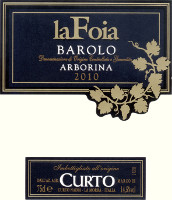
 Nebbiolo
Nebbiolo Brilliant ruby red and nuances of brick red, moderate transparency.
Brilliant ruby red and nuances of brick red, moderate transparency. Intense, clean, pleasing, refined and elegant, starts with hints of
cherry, plum and raspberry followed by aromas of violet, tobacco, rose,
chocolate, pink pepper, cinnamon, mace, vanilla and menthol.
Intense, clean, pleasing, refined and elegant, starts with hints of
cherry, plum and raspberry followed by aromas of violet, tobacco, rose,
chocolate, pink pepper, cinnamon, mace, vanilla and menthol.
 Tannic attack and however balanced by alcohol, full body, intense
flavors, pleasing crispness.
Tannic attack and however balanced by alcohol, full body, intense
flavors, pleasing crispness.
 Persistent finish with flavors of cherry, plum and raspberry.
Persistent finish with flavors of cherry, plum and raspberry. 2 years in barrique.
2 years in barrique. Game, Stewed and braised meat, Roasted meat, Hard cheese
Game, Stewed and braised meat, Roasted meat, Hard cheese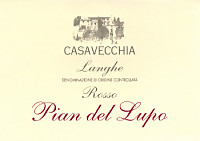
 Nebbiolo, Cabernet Sauvignon, Merlot
Nebbiolo, Cabernet Sauvignon, Merlot Intense ruby red and nuances of garnet red, little transparency.
Intense ruby red and nuances of garnet red, little transparency. Intense, clean, pleasing and refined, starts with hints of black
cherry, plum and black currant followed by aromas of dried violet,
blueberry, tobacco, vanilla, cocoa, mace, licorice and menthol.
Intense, clean, pleasing and refined, starts with hints of black
cherry, plum and black currant followed by aromas of dried violet,
blueberry, tobacco, vanilla, cocoa, mace, licorice and menthol.
 Properly tannic attack and however balanced by alcohol, good body,
intense flavors, agreeable.
Properly tannic attack and however balanced by alcohol, good body,
intense flavors, agreeable.
 Persistent finish with flavors of black cherry, plum and black currant.
Persistent finish with flavors of black cherry, plum and black currant. 14 months in barrique, at least 12 months in bottle.
14 months in barrique, at least 12 months in bottle. Roasted meat, Stewed and braised meat with mushrooms, Hard cheese
Roasted meat, Stewed and braised meat with mushrooms, Hard cheese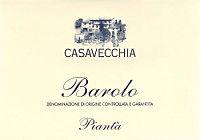
 Nebbiolo
Nebbiolo Brilliant ruby red and nuances of garnet red, moderate transparency.
Brilliant ruby red and nuances of garnet red, moderate transparency. Intense, clean, pleasing, refined and elegant, starts with hints of
plum, cherry and violet followed by aromas of blueberry, dried rose, cocoa,
licorice, vanilla, cinnamon, mace, tobacco, leather and menthol.
Intense, clean, pleasing, refined and elegant, starts with hints of
plum, cherry and violet followed by aromas of blueberry, dried rose, cocoa,
licorice, vanilla, cinnamon, mace, tobacco, leather and menthol.
 Tannic attack and however balance by alcohol, full body, intense
flavors, agreeable.
Tannic attack and however balance by alcohol, full body, intense
flavors, agreeable.
 Persistent finish with flavors of plum, cherry and blueberry.
Persistent finish with flavors of plum, cherry and blueberry. 2 years in cask, at least 18 months in bottle.
2 years in cask, at least 18 months in bottle. Game, Roasted meat, Stewed and braised meat, Hard cheese
Game, Roasted meat, Stewed and braised meat, Hard cheese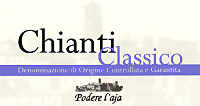
 Sangiovese (95%), Canaiolo Nero, Colorino (5%)
Sangiovese (95%), Canaiolo Nero, Colorino (5%) Intense ruby red and nuances of garnet red, moderate transparency.
Intense ruby red and nuances of garnet red, moderate transparency. Intense, clean, pleasing and refined, starts with hints of black
cherry, plum and dried violet followed by aromas of blueberry, raspberry,
tobacco, vanilla, chocolate and menthol.
Intense, clean, pleasing and refined, starts with hints of black
cherry, plum and dried violet followed by aromas of blueberry, raspberry,
tobacco, vanilla, chocolate and menthol.
 Properly tannic attack and however balanced by alcohol, good body,
intense flavors, pleasing roundness.
Properly tannic attack and however balanced by alcohol, good body,
intense flavors, pleasing roundness.
 Persistent finish with flavors of black cherry, plum and blueberry.
Persistent finish with flavors of black cherry, plum and blueberry. 12 months in cask.
12 months in cask. Broiled meat and barbecue, Stewed meat, Hard cheese
Broiled meat and barbecue, Stewed meat, Hard cheese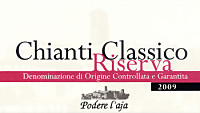
 Sangiovese (90%), Merlot (5%), Canaiolo Nero, Colorino (5%)
Sangiovese (90%), Merlot (5%), Canaiolo Nero, Colorino (5%) Brilliant ruby red and nuances of garnet red, moderate transparency.
Brilliant ruby red and nuances of garnet red, moderate transparency. Intense, clean, pleasing and refined, starts with hints of black
cherry, plum and dried violet followed by aromas of blueberry, blackberry,
chocolate, tobacco, vanilla, cinnamon and menthol.
Intense, clean, pleasing and refined, starts with hints of black
cherry, plum and dried violet followed by aromas of blueberry, blackberry,
chocolate, tobacco, vanilla, cinnamon and menthol.
 Properly tannic attack and however balanced by alcohol, good body,
intense flavors, agreeable.
Properly tannic attack and however balanced by alcohol, good body,
intense flavors, agreeable.
 Persistent finish with flavors of black cherry, plum and blueberry.
Persistent finish with flavors of black cherry, plum and blueberry. 24 months in cask.
24 months in cask. Broiled meat and barbecue, Roasted meat, Stewed meat with mushrooms, Hard cheese
Broiled meat and barbecue, Roasted meat, Stewed meat with mushrooms, Hard cheese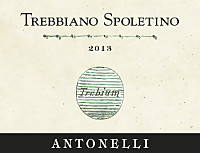
 Trebbiano Spoletino
Trebbiano Spoletino Intense straw yellow and nuances of straw yellow, very transparent.
Intense straw yellow and nuances of straw yellow, very transparent. Intense, clean, pleasing, refined and elegant, starts with hints of
apple, citrus fruits and plum followed by aromas of pear, medlar,
pineapple, broom, hawthorn, peach, grapefruit, mineral and hints of
vanilla.
Intense, clean, pleasing, refined and elegant, starts with hints of
apple, citrus fruits and plum followed by aromas of pear, medlar,
pineapple, broom, hawthorn, peach, grapefruit, mineral and hints of
vanilla.
 Crisp attack and however balanced by alcohol, good body, intense
flavors, agreeable.
Crisp attack and however balanced by alcohol, good body, intense
flavors, agreeable.
 Persistent finish with flavors of apple, plum and medlar.
Persistent finish with flavors of apple, plum and medlar. 9 months in cask, 3 months in bottle.
9 months in cask, 3 months in bottle. Cold cuts, Pasta with meat, Roasted fish, Sauteed white meat
Cold cuts, Pasta with meat, Roasted fish, Sauteed white meat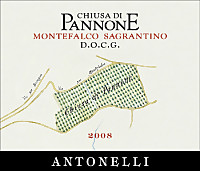
 Sagrantino
Sagrantino Intense ruby red and nuances of garnet red, little transparency.
Intense ruby red and nuances of garnet red, little transparency. Intense, clean, pleasing, refined and elegant, starts with hints of
blackberry, black cherry and plum followed by aromas of blueberry, violet,
chocolate, tobacco, leather, cinnamon, licorice, mace, vanilla and menthol.
Intense, clean, pleasing, refined and elegant, starts with hints of
blackberry, black cherry and plum followed by aromas of blueberry, violet,
chocolate, tobacco, leather, cinnamon, licorice, mace, vanilla and menthol.
 Tannic attack and however balanced by alcohol, full body, intense
flavors, agreeable.
Tannic attack and however balanced by alcohol, full body, intense
flavors, agreeable.
 Very persistent finish with long flavors of blackberry, plum and black
cherry.
Very persistent finish with long flavors of blackberry, plum and black
cherry.
 21 months in cask, 3 months in cement tanks, 2 years in bottle.
21 months in cask, 3 months in cement tanks, 2 years in bottle. Game, Roasted meat, Stewed and braised meat, Hard cheese
Game, Roasted meat, Stewed and braised meat, Hard cheese
